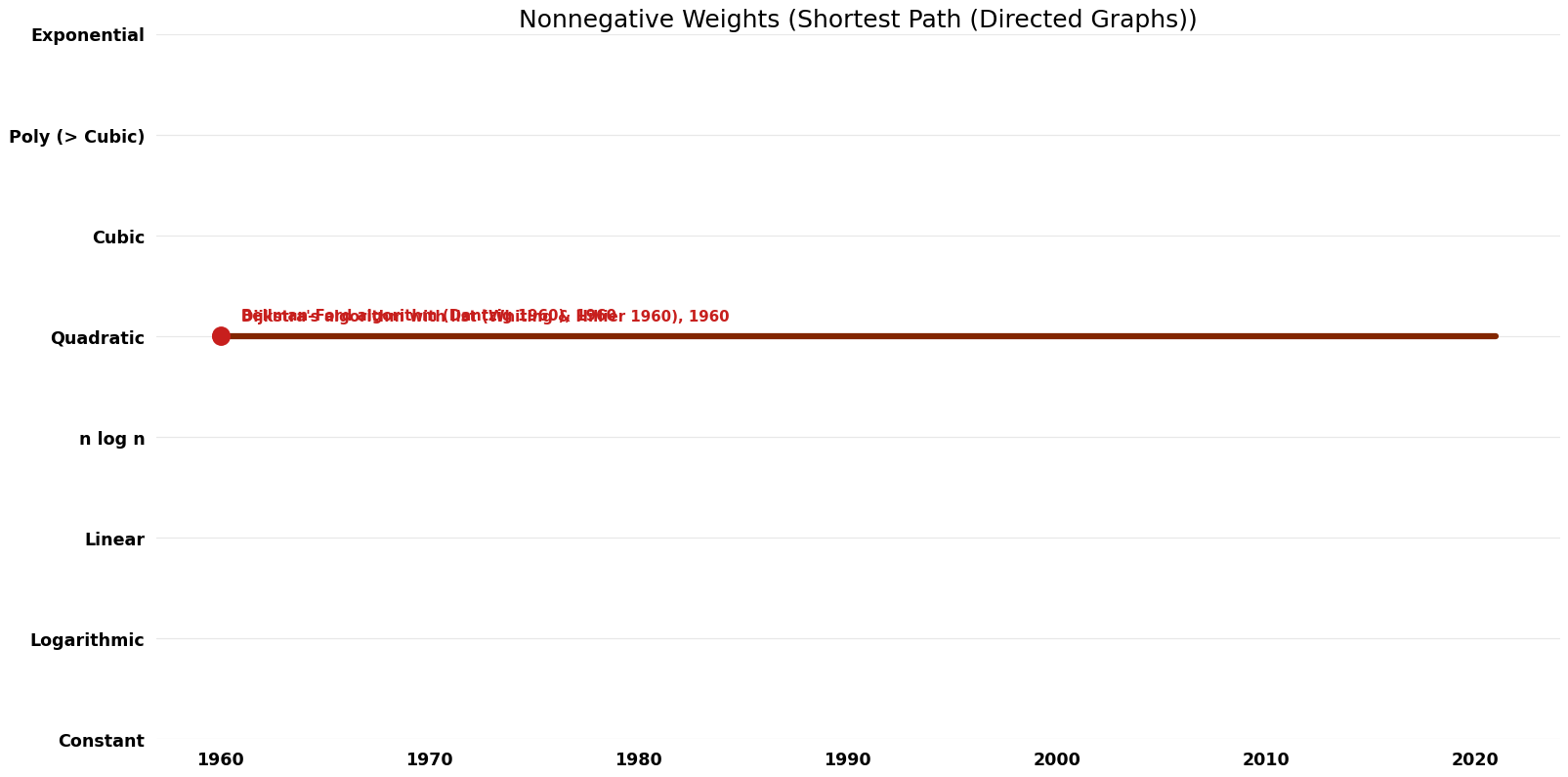Nonnegative Weights (Shortest Path (Directed Graphs))
Description
The shortest path problem is the problem of finding a path between two vertices (or nodes) in a graph such that the sum of the weights of its constituent edges is minimized. Here, the weights are restricted to be nonnegative.
Related Problems
Generalizations: general weights
Subproblem: Nonnegative Integer Weights
Related: General Weights, Second Shortest Simple Path, st-Shortest Path, 1-sensitive (3/2)-approximate ss-shortest paths, 2-sensitive (7/5)-approximate st-shortest paths, 1-sensitive decremental st-shortest paths, 2-sensitive decremental st-shortest paths, Replacement Paths Problem
Parameters
$V$: number of vertices
$E$: number of edges
$L$: maximum absolute value of edge cost
Table of Algorithms
| Name | Year | Time | Space | Approximation Factor | Model | Reference |
|---|---|---|---|---|---|---|
| Bellman–Ford algorithm (Dantzig ) | 1960 | $O(V^{2} \log V)$ | $O(E)$ (total) | Exact | Deterministic | Time |
| Dijkstra's algorithm with list (Whiting & Hillier ) | 1960 | $O(V^{2})$ | $O(V)$ | Exact | Deterministic | Time |
| Dijkstra's algorithm with binary heap (Johnson ) | 1977 | $O((E + V) \log V)$ | $O(V)$ | Exact | Deterministic | Time |
| Dijkstra's algorithm with Fibonacci heap (Fredman & Tarjan ; Fredman & Tarjan 1987) | 1984 | $O(E + V \log V)$ | $O(V)$ | Exact | Deterministic | Time |
| Gabow's algorithm | 1983 | $O(E \log L/\log({2}+(E/V)))$ | $O(V+E)$? | Exact | Deterministic | Time |
Time Complexity Graph
References/Citation
https://www.cs.princeton.edu/courses/archive/fall03/cs528/handouts/fibonacci%20heaps.pdf
